Ergonomics
Vision
Nicole Stormon and Veronica Kindaro
Learning Objectives
Understand the techniques used to enhance vision and facilitate correct posture in dental practice.
Appreciate specialised tools used to enhance vision during dental procedures.
Principles
It is essential to maintain a neutral spinal position, while working to minimise musculoskeletal injury and pain. Posture and ergonomics can easily be compromised for clear vision of the working area during procedures.
Direct and indirect vision
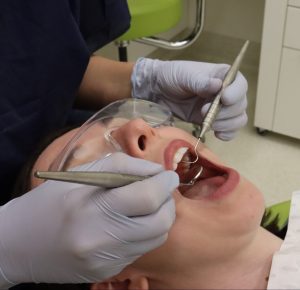
Procedures undertaken in the mandibular arch will usually be directly viewed by the operator. However, direct vision is not always possible for the maxillary arch, and a dental mirror is used to indirectly view these areas. The term “indirect vision” is used for the use of a mirror to visualise operating area that is not directly visualised by the operator. In indirect vision, all movements are mirrored.
As an example, an instrument being used in the mouth will appear to move towards the midline, whilst the operator has moved the instrument away from the midline.
Retraction of the soft tissue including the lips, cheek and tongue are often necessary for adequate visualisation, regardless of whether direct or indirect vision is employed.
Adjuncts to assist with vision
Dental loupes
Dental loupes are magnifying lenses attached to eyewear for better visualisation of the working area. Loupes generally provide between 2.5 and 5.5 times magnification. They will however, restrict and narrow the field of view for the operator.
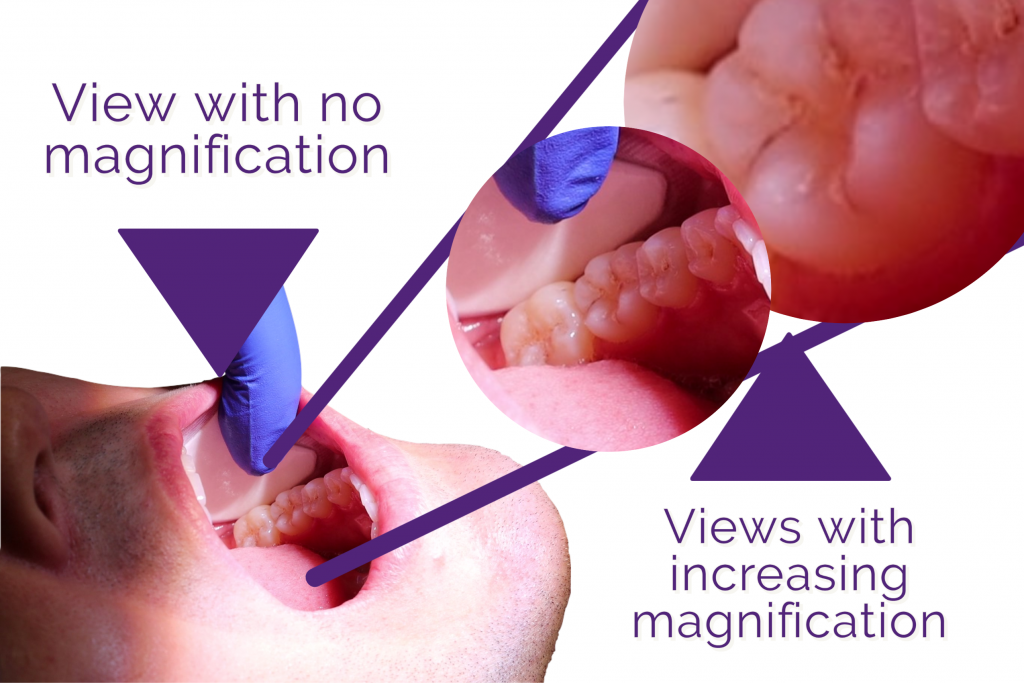
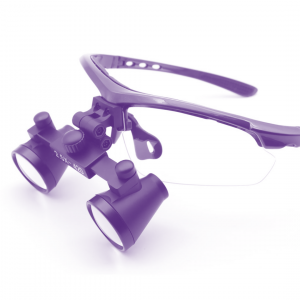
Dental Loupes are customised and fitted for the individual clinician to ensure optimal posture and ergonomic position.
- The telescope of the dental loupe is the lens which provides magnification. It is placed through the eyewear glass in the “Through-The-Lens” (TTL) position. The specific clinician’s inter-pupillary distance varies. This is measured, just like for normal vision correction spectacles. This is to ensure that the TTL position, is correct for the specific clinician, and prevents eye strain.
- The working distance from the clinician to the patient varies between operators due to variations in height and body types. The angulation of the telescope in the eyewear is customised to ensure the neck does not need to be angled to have a clear view of the working area.
Medical microscopes
Medical and dental microscopes are motorised and illuminated microscopes for clinical procedures. In dentistry, they are primarily used by specialised dental practitioners undertaking precise procedures. Their magnification varies depending on the manufacturer and brand of the equipment, but can provide magnification between 10 and 14 times. These microscopes are often digitalised and facilitate recording and advanced illumination techniques. They are designed to facilitate infection control measures during their operation.
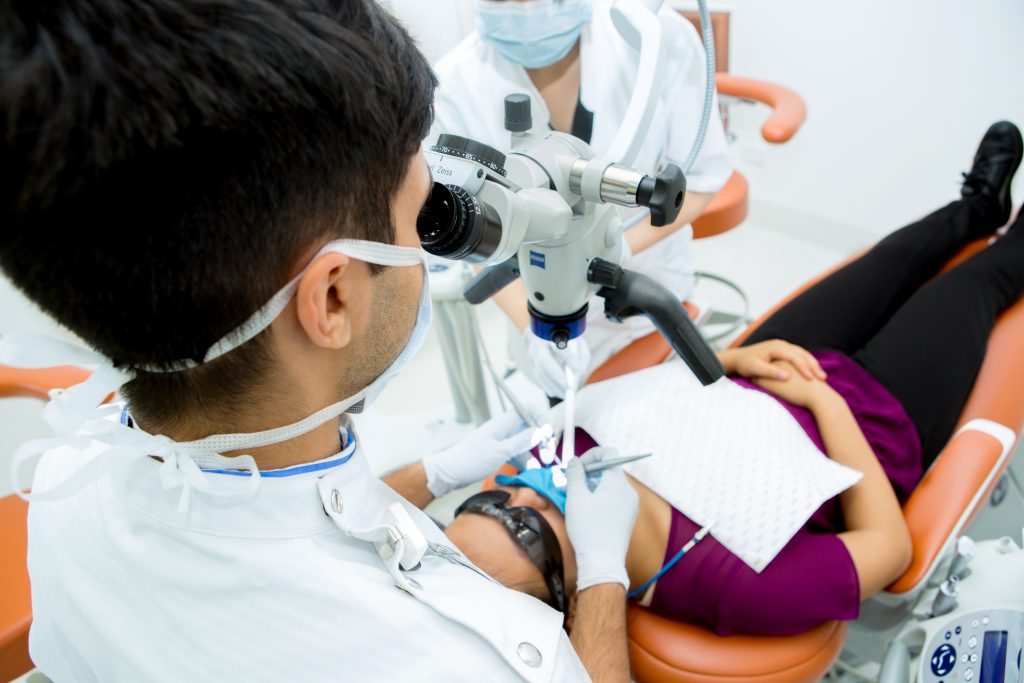
https://www.youtube.com/watch?v=Ed30L5oTkls
Practical application of the dental environment
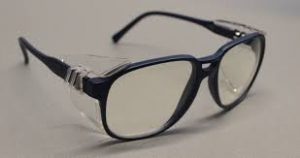 Clinicans that require prescription reading glasses often have their prescription incorporated into their safety glasses, or alternatively wear safety glasses or a face shield over their prescription glasses. Have clear sight is essential in dental practice for visualisation.
Clinicans that require prescription reading glasses often have their prescription incorporated into their safety glasses, or alternatively wear safety glasses or a face shield over their prescription glasses. Have clear sight is essential in dental practice for visualisation.
Key Takeaways
- Procedures undertaken in the mandibular arch can be directly viewed by the operator, whereas, direct vision is not always possible for the maxillary arch. A dental mirror is used to indirectly view these areas.
- Indirect vision is accomplished using a dental mirror, whereby all movement are mirrored.
- Dental loupes and medical microscopes are used to assist with magnifying the field of operation. Both assist in improved visual acuity, improved posture and reduced eye strain.
The area where the operator is undertaking a procedure in the oral cavity.
A technique used to visualise operating area that is not directly visible by the operator.
The area which a clinician can see in the oral cavity.

